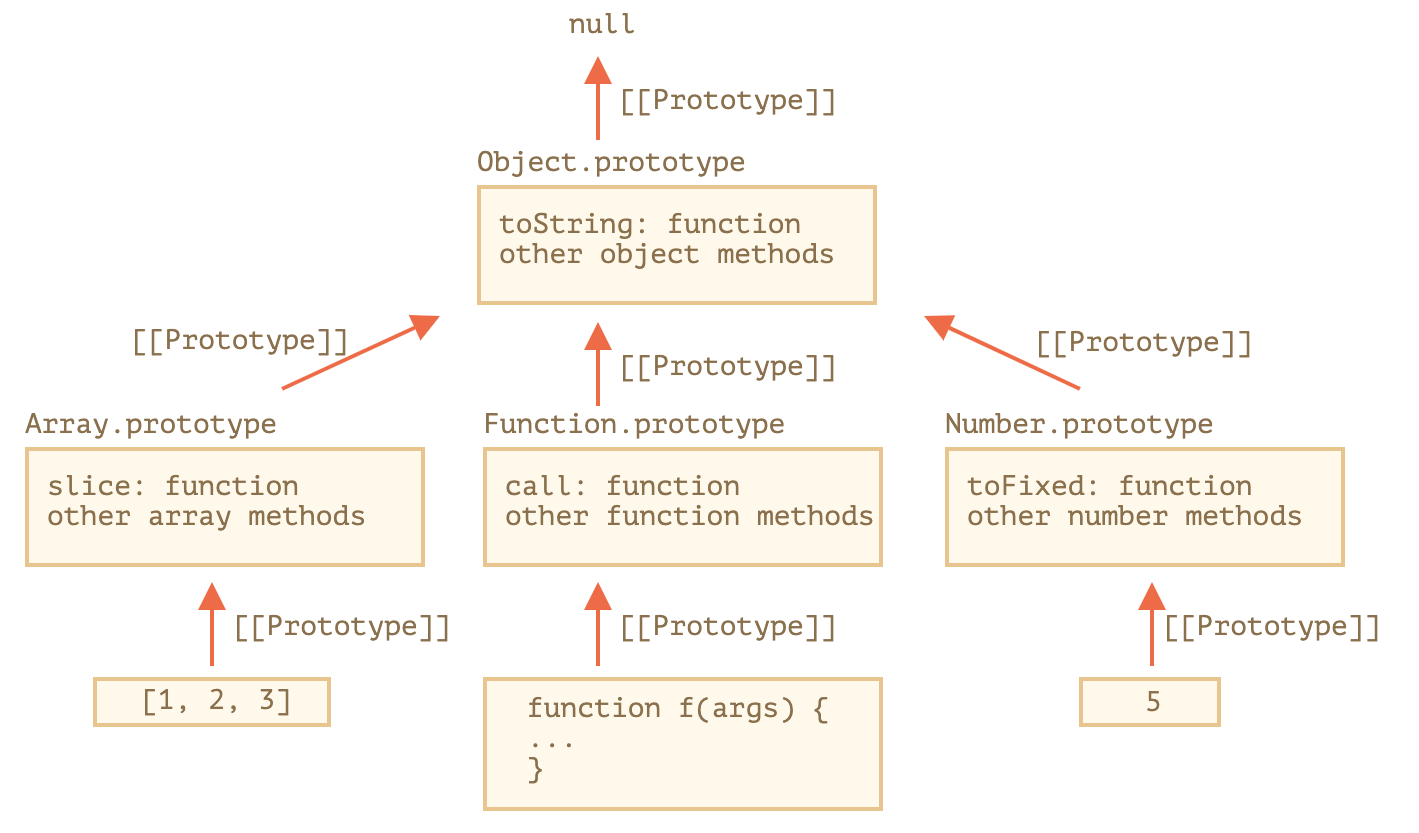本篇内容主要讲解“如何掌握前端JavaScript中的class类”,感兴趣的朋友不妨来看看。本文介绍的方法操作简单快捷,实用性强。下面就让小编来带大家学习“如何掌握前端JavaScript中的class类”吧!
类是用于创建对象的模板。JavaScript中生成对象实例的方法是通过构造函数,这跟主流面向对象语言(java,C# )写法上差异较大,如下:
function Point(x, y) {
this.x = x;
this.y = y;
}
Point.prototype.toString = function () {
return '(' + this.x + ', ' + this.y + ')';
};
var p = new Point(1, 1);ES6 提供了更接近Java语言的写法,引入了 Class(类)这个概念,作为对象的模板。通过class关键字,可以定义类。
如下:constructor()是构造方法,而this代表实例对象:
class Point {
constructor(x, y) {
this.x = x;
this.y = y;
}
toString() {
return '(' + this.x + ', ' + this.y + ')';
}
}类的数据类型就是函数,它本身就是指向函数的构造函数:
// ES5 函数声明
function Point() {
//...
}
// ES6 类声明
class Point {
//....
constructor() {
}
}
typeof Point // "function"
Point === Point.prototype.constructor // true在类里面定义的方法是挂到Point.prototype,所以类只是提供了语法糖,本质还是原型链调用。
class Point {
constructor(x, y) {
this.x = x;
this.y = y;
}
toString() {
return '(' + this.x + ', ' + this.y + ')';
}
}
Point.prototype = {
//....
toString()
}
var p = new Point(1, 1);
p.toString() // (1,1)类的另一种定义方式类表达式
// 未命名/匿名类
let Point = class {
constructor(x, y) {
this.x = x;
this.y = y;
}
};
Point.name // Point函数声明和类声明有个重要区别,函数声明会提升,类声明不会提升。
> let p = new Point(); // 被提升不会报错
> function Point() {}
>
> let p = new Point(); // 报错,ReferenceError
> class Point {}
>constructor()方法是类的默认方法,new生成实例对象时会自动调用该方法。
一个类必须有constructor()方法,如果没有显式定义,引擎会默认添加一个空的constructor() 。
constructor()方法默认返回实例对象(即this)。
class Point {
}
// 自动添加
class Point {
constructor() {}
}与 ES5 一样,在类的内部可以使用get和set关键字,对某个属性设置存值函数和取值函数,拦截该属性的存取行为。
class User {
constructor(name) {
this.name = name;
}
get name() {
return this.name;
}
set name(value) {
this.name = value;
}
}类的方法内部的this,它默认指向类的实例,在调用存在this的方法时,需要使用 obj.method()方式,否则会报错。
class User {
constructor(name) {
this.name = name;
}
printName(){
console.log('Name is ' + this.name)
}
}
const user = new User('jack')
user.printName() // Name is jack
const { printName } = user;
printName() // 报错 Cannot read properties of undefined (reading 'name')如果要单独调用又不报错,一种方法可以在构造方法里调用bind(this) 。
class User {
constructor(name) {
this.name = name;
this.printName = this.printName.bind(this);
}
printName(){
console.log('Name is ' + this.name)
}
}
const user = new User('jack')
const { printName } = user;
printName() // Name is jackbind(this) 会创建一个新函数,并将传入的this作为该函数在调用时上下文指向。
另外可以使用箭头函数,因为箭头函数内部的this总是指向定义时所在的对象。
class User {
constructor(name) {
this.name = name;
}
printName = () => {
console.log('Name is ' + this.name)
}
}
const user = new User('jack')
const { printName } = user;
printName() // Name is jack静态属性指的是类本身的属性,而不是定义在实例对象this上的属性。
class User {
}
User.prop = 1;
User.prop // 1可以在类里面定义静态方法,该方法不会被对象实例继承,而是直接通过类来调用。
静态方法里使用this是指向类。
class Utils {
static printInfo() {
this.info();
}
static info() {
console.log('hello');
}
}
Utils.printInfo() // hello关于方法的调用范围限制,比如:私有公有,ES6暂时没有提供,一般是通过约定,比如:在方法前面加下划线_print()表示私有方法。
Java中通过extends实现类的继承。ES6中类也可以通过extends实现继承。
继承时,子类必须在constructor方法中调用super方法,否则新建实例时会报错。
class Point3D extends Point {
constructor(x, y, z) {
super(x, y); // 调用父类的constructor(x, y)
this.z = z;
}
toString() {
return super.toString() + ' ' + this.z ; // 调用父类的toString()
}
}父类的静态方法,也会被子类继承
class Parent {
static info() {
console.log('hello world');
}
}
class Child extends Parent {
}
Child.info() // hello world在子类的构造函数必须执行一次super函数,它代表了父类的构造函数。
class Parent {}
class Child extends Parent {
constructor() {
super();
}
}在子类普通方法中通过super调用父类的方法时,方法内部的this指向当前的子类实例。
class Parent {
constructor() {
this.x = 1;
this.y = 10
}
printParent() {
console.log(this.y);
}
print() {
console.log(this.x);
}
}
class Child extends Parent {
constructor() {
super();
this.x = 2;
}
m() {
super.print();
}
}
let c = new Child();
c.printParent() // 10
c.m() // 2初学JavaScript时, _proto_和prototype 很容易混淆。首先我们知道每个JS对象都会对应一个原型对象,并从原型对象继承属性和方法。
prototype 一些内置对象和函数的属性,它是一个指针,指向一个对象,这个对象的用途就是包含所有实例共享的属性和方法(我们把这个对象叫做原型对象)。
_proto_ 每个对象都有这个属性,一般指向对应的构造函数的prototype属性。
下图是一些拥有prototype内置对象:

根据上面描述,看下面代码
var obj = {} // 等同于 var obj = new Object()
// obj.__proto__指向Object构造函数的prototype
obj.__proto__ === Object.prototype // true
// obj.toString 调用方法从Object.prototype继承
obj.toString === obj.__proto__.toString // true
// 数组
var arr = []
arr.__proto__ === Array.prototype // true对于function对象,声明的每个function同时拥有prototype和__proto__属性,创建的对象属性__proto__指向函数prototype,函数的__proto__又指向内置函数对象(Function)的prototype。
function Foo(){}
var f = new Foo();
f.__proto__ === Foo.prototype // true
Foo.__proto__ === Function.prototype // true类作为构造函数的语法糖,也会同时有prototype属性和__proto__属性,因此同时存在两条继承链。
子类的__proto__属性,表示构造函数的继承,总是指向父类。
子类prototype属性的__proto__属性,表示方法的继承,总是指向父类的prototype属性。
class Parent {
}
class Child extends Parent {
}
Child.__proto__ === Parent // true
Child.prototype.__proto__ === Parent.prototype // true子类实例的__proto__属性,指向子类构造方法的prototype。
子类实例的__proto__属性的__proto__属性,指向父类实例的__proto__属性。也就是说,子类的原型的原型,是父类的原型。
class Parent {
}
class Child extends Parent {
}
var p = new Parent();
var c = new Child();
c.__proto__ === p.__proto__ // false
c.__proto__ === Child.prototype // true
c.__proto__.__proto__ === p.__proto__ // true到此,相信大家对“如何掌握前端JavaScript中的class类”有了更深的了解,不妨来实际操作一番吧!这里是亿速云网站,更多相关内容可以进入相关频道进行查询,关注我们,继续学习!
亿速云「云服务器」,即开即用、新一代英特尔至强铂金CPU、三副本存储NVMe SSD云盘,价格低至29元/月。点击查看>>
免责声明:本站发布的内容(图片、视频和文字)以原创、转载和分享为主,文章观点不代表本网站立场,如果涉及侵权请联系站长邮箱:is@yisu.com进行举报,并提供相关证据,一经查实,将立刻删除涉嫌侵权内容。